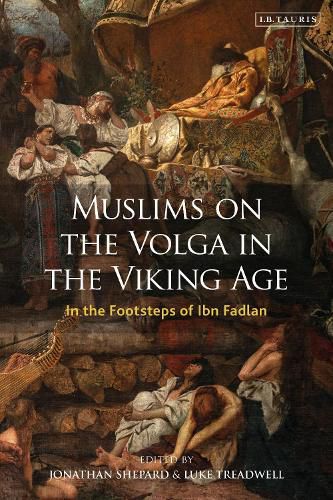Readings Newsletter
Become a Readings Member to make your shopping experience even easier.
Sign in or sign up for free!
You’re not far away from qualifying for FREE standard shipping within Australia
You’ve qualified for FREE standard shipping within Australia
The cart is loading…






The year 922 saw a series of remarkable face-to-face encounters in the steppes between Bukhara and the Middle Volga. Ibn Fadlan was an intrepid member of a diplomatic and religious mission from the distant caliphate in Baghdad to the ruler of the Volga Bulgars. His account gives a vivid eyewitness description of the peoples he came upon (whose appearance, rituals and filthy habits both fascinate and appal) and a famous depiction of a Viking Rus ship burial. It is unique testimony to burgeoning exchanges between several different cultures, and to the emergence of new political structures on the steppes. Yet the account survives only as part of a later composite work, raising questions of meaning and historical interpretation. This pioneering interdisciplinary study of Ibn Fadlan's text and the world he surveyed draws on a variety of specialists to give readers both 'the bigger picture' of cultural and economic change in Eurasia, Byzantium and the Muslim world, and hard facts, in the form of archaeological and numismatic data.
$9.00 standard shipping within Australia
FREE standard shipping within Australia for orders over $100.00
Express & International shipping calculated at checkout
The year 922 saw a series of remarkable face-to-face encounters in the steppes between Bukhara and the Middle Volga. Ibn Fadlan was an intrepid member of a diplomatic and religious mission from the distant caliphate in Baghdad to the ruler of the Volga Bulgars. His account gives a vivid eyewitness description of the peoples he came upon (whose appearance, rituals and filthy habits both fascinate and appal) and a famous depiction of a Viking Rus ship burial. It is unique testimony to burgeoning exchanges between several different cultures, and to the emergence of new political structures on the steppes. Yet the account survives only as part of a later composite work, raising questions of meaning and historical interpretation. This pioneering interdisciplinary study of Ibn Fadlan's text and the world he surveyed draws on a variety of specialists to give readers both 'the bigger picture' of cultural and economic change in Eurasia, Byzantium and the Muslim world, and hard facts, in the form of archaeological and numismatic data.